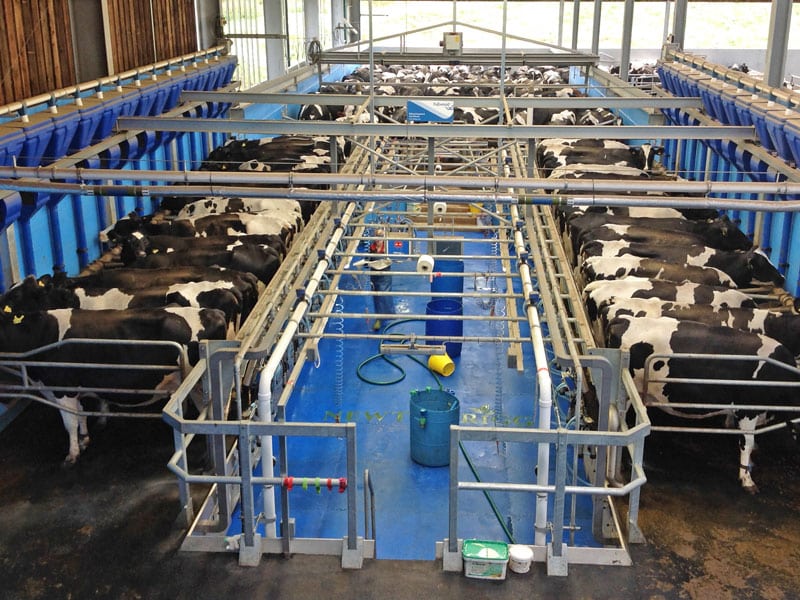Farmer/owner: Newton Rigg College
Farm location: Penrith, Cumbria
Farm name: Sewborwens
Farm Herd: 220 Pedigree Holsteins
Milking system: 30:30 QS parallel parlour
Date of installation: February 2014
A new dairy unit at Newton Rigg College’s Sewborwens Farm is providing students at the Penrith-based college with state-of-the-art milking and learning facilities that include a 30:30 parallel parlour, modern cubicle housing and full AI and veterinary handling races. Officially opened in March 2014, the new unit has seen a marked increase in milk yields as well as improvements in cow welfare, notably a reduction in lameness.
Jonathan Fisher, Newton Rigg’s Farm Manager states “we started designing the new unit with a completely blank canvas and were open to any parlour design and farming type.
“At first we didn’t know if we’d end up with a high input or low input system or whether the cows would be milked conventionally or robotically. The only stipulation was that the new unit needed to be commercially viable and fit for the purpose of teaching students at any time of the year.”
The Newton Rigg Herd now numbers 220 pedigree Holsteins, milked through a Fullwood 30:30 parallel parlour which is equipped with the company’s QS (Quick Start) system, featuring 90-degree indexed stalls which lift away from the cows at the end of milking for a rapid exit.
The QS parlour enables rapid milking by presenting the cows at 90 degrees for faster cluster attachment. “Rear leg milking is also better suited to training students who need to learn the correct routine for teat and udder preparation,” Jonathan adds. “And the 90 degree angle also meant that we could fit more milking points into a smaller space.”
The parlour differs from most private installations in that the pit is almost four metres wide so that students and staff can work and learn alongside each other. In addition to its role as a teaching facility, the parlour was also designed so that it can be used efficiently when there aren’t any students present.
As well as an increase in student numbers, the new unit has also given rise to an increase in herd productivity: milk yields have increased from 27 litres to 34 litres per day due to a combination of factors. “We’ve not only built a first-class teaching environment, but that we’ve also designed a dairy unit which works well for our cows.”
